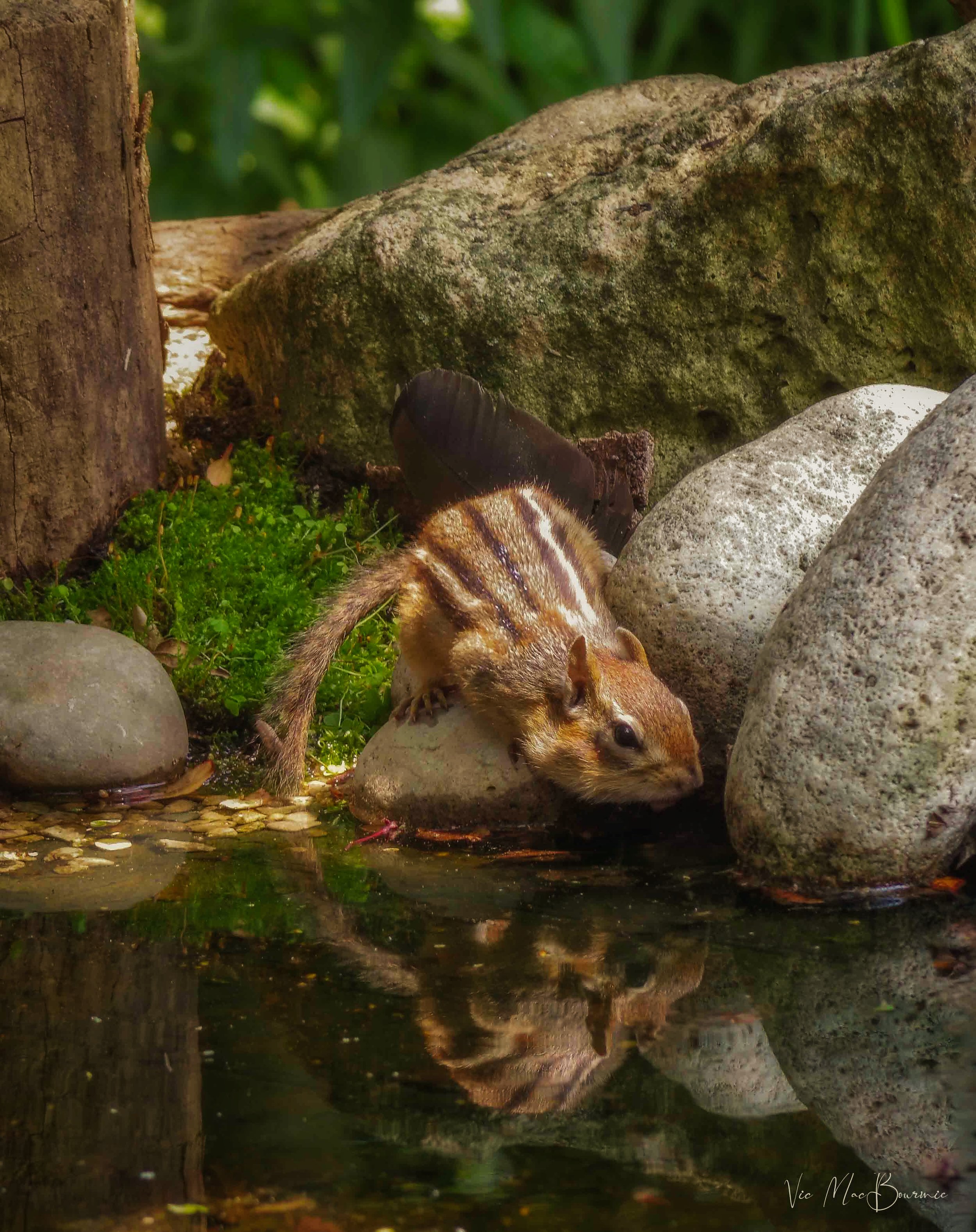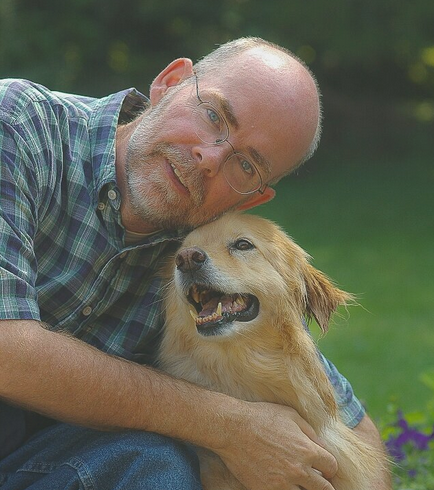If you build it, they will come
“A garden without wildlife is just a stage set. ”
An afternoon of photography in the woodland/wildlife garden
“If you build it they wll come,” certainly rings true in our little woodland garden.
On any given day there are a host of visitors to the garden ranging from a mama deer and her fawns, to a beautiful fox wandering through looking for prey. While these woodland creatures are not always regular visitors to the backyard, they, along with a host of birds from owls to woodland warblers and wild turkeys provide the memorable moments and exciting photographic opportunities that are not always possible during, for example, a Walk in the Woods.
While the potential for these wildlife encounters and photo opportunities add an air of anticipation and excitement whenever I’m out it the garden, it’s our regulars that keep us entertained and provide a wealth of photographic opportunities on any given day.
There are many good reasons to build a woodland/wildlife garden that does not involve capturing images, but for me photography was one of the key driving factors behind the decision to create our garden.
The added benefit of providing subjects to photograph will be just a bonus for some, or a raison d’etre for others who seek out a creative outlet for their photographic pursuits.
This article looks at a number of images made over about a five-hour period under less than favourable photographic lighting from about 10am to 3 pm in hot, sunny conditions.
“Expensive photographic expeditions to far off and exotic places are not necessary to capture great images. Time, patience and some ingenious natural outdoor photographic setups can help you make great images every day, or maybe just on weekends.”
Native plants are key to success
By focusing on using as many native plants as possible, I knew the opportunities to bring in an ever increasing number and variety of wildlife would increase exponentially. So, I guess you could say that adding native plants was as much for my benefit as it was for the wildlife and biodiversity of the garden.
Nevertheless, it’s working for both the native wildlife and for our enjoyment of the garden, its inhabitants and regular visitors.
Although I love the images below of the wild turkeys wandering through the alliums, the fact alliums are non native screams a garden image or, much worse, an Ai-produced image. In this case, the alliums are a new addition to the garden for aesthetic reasons entirely and, as you will see, they offer some interesting photographic opportunities. The second image of the turkey in our massive fern garden is much more natural.
Gardens, especially native, woodland gardens, have a way of bringing both life to the world around us and joy in our hearts.
This image of a chipmunk made at the backyard reflection post shows the top of images available when you add a small, simple reflection pond to your woodland/wildlife garden.
Key elements to help ensure success
To help ensure a greater photographic success rate, I have added a few key elements to attract more wildlife to specific areas of the garden. Obviously a bird feeding station is at the heart of it, but a small outdoor reflection pond adds the possibility of capturing interesting images on a regular basis. (See chipmunk image).
More recently, I have begun to add natural woodland planters throughout the front and back gardens. The planters are based around fallen logs that provide a central area for native woodland plants, mosses and ferns. The planters will provide natural homes for a myriad of wildlife from snakes to salamanders and toads as well as a host of insects and mammals.
It was here, with the bird feeding station in front of me and the reflection pond to my left, that I chose to set up my Tragopan Photo blind for some bird-feeder and outdoor-studio action on a recent afternoon after spending some time making images of our alliums and other garden flowers with a Lensbaby Composer lens and macro filters.
The following are a selection of images from that afternoon of photography with three cameras – A Pentax K5 equipped with the Pentax 300mm F4.5* lens and 1.4 af Tamron converter for bird closups, the diminutive Pentax Q and 06, f2.8 lens (equivalent to about 80-200mm) and the Olympus OMD-E10 equipped with the Lensbaby Composer and closeup lenses.
The images were post processed using Lightroom and Luminar Neo.
The day of photography began with making images of the spring flowers with the Lensbaby Composer on the Olympus EM10 in the back garden. The following is a sampling of images made with the Lensbaby. (For more images, be sure to check out my Photo gallery from the photo shoot.) For those not familiar with the lens, it is a lens system used to capture creative, dreamy, soft-focus images. Although the lenses are capable of capturing sharp images, they really come into their own when used more creatively to make soft, delicate, ethereal images where sharpness is not the focus.
The late morning/afternoon backyard photo safari began with an hour of flower photography transitioning into an afternoon of bird and wildlife photography.
Below are a sampling of images from the second part of the photo session where I spent the afternoon in the photo blind listening to music on the iPod (yes I still use one) and making images of birds at the feeder and wildlife at the reflection pond/outdoor studio. (For more images, be sure to check out the accompanying photo gallery that provides more information on lenses, f-stops etc.)
In the time spent in the photographic blind, I was visited by the female cardinal, blue jay and a host of woodpeckers at the bird-feeding station, while a combination of feisty red squirrels and chipmunks visited the reflection pond. A blue jay came to the reflection pond for a brief moment before flying back to the feeding station.
Only the chipmunk came down for a drink at the pond, allowing me to make a few images where the chipmunk’s reflection was captured. (See image higher up in this post)
Capturing the beauty of the woodland/wildlife garden
If you are lucky enough to have either already created a woodland/wildlife garden, or are considering your options on the style of garden you want to create in your yard, consider adding elements that will enable you to make memorable wildlife images in the comfort of your backyard.
Expensive photographic expeditions to far off and exotic places are not necessary to capture great images. Time, patience and some ingenious natural outdoor photographic setups can help you make great images every day, or maybe just on weekends.
In this post I touched on flowers, birds, and a couple of regular backyard squirrels and chipmunks, but butterflies, hummingbirds, various insects and a myriad of native flowers are just a sampling of subjects that create the perfect backdrop to capture some stunning images on your own backyard safari.











